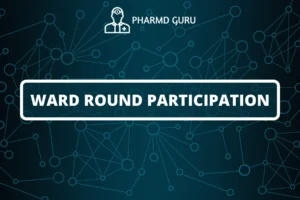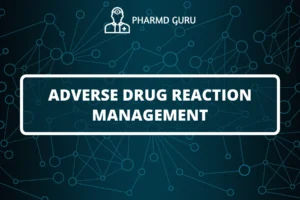Adverse drug reactions (ADRs) are unwanted or harmful effects caused by medications. They can range from mild side effects to severe reactions that can be life-threatening. Understanding the classification, mechanisms, predisposing factors, and causality assessment of ADRs is crucial for healthcare professionals to ensure safe medication use. This article provides an overview of these aspects related to adverse drug reactions.
SCROLL DOWN TO THE BOTTOM OF THE PAGE FOR ACTUAL NOTES
TABLE OF CONTENTS:
- Introduction
- Classification of Adverse Drug Reactions
- Mechanisms of Adverse Drug Reactions
- Predisposing Factors for Adverse Drug Reactions
- Causality Assessment of Adverse Drug Reactions
1. Introduction
Adverse drug reactions are unintended and undesirable effects that occur as a result of medication use. They can manifest in various ways, including physical symptoms, laboratory abnormalities, or changes in the patient’s condition. ADRs can occur with any medication and can affect individuals differently.
2. Classification of Adverse Drug Reactions
ADRs can be classified into several categories based on different criteria:
- Type A (Augmented) Reactions: These reactions are predictable and dose-dependent. They occur as a result of the pharmacological actions of the drug and are usually related to the drug’s known side effects.
- Type B (Bizarre) Reactions: These reactions are unpredictable and not dose-dependent. They are unrelated to the known pharmacological actions of the drug and may be idiosyncratic or allergic in nature.
- Type C (Chronic) Reactions: These reactions occur with long-term medication use and are often associated with cumulative dose or duration of treatment. Examples include drug-induced organ toxicity or hormonal disturbances.
- Type D (Delayed) Reactions: These reactions occur after a significant time delay from drug administration. They can manifest as long-term adverse effects, such as late-onset drug-induced diseases.
- Type E (End-of-treatment) Reactions: These reactions occur upon discontinuation of medication and can manifest as withdrawal symptoms or rebound effects.
3. Mechanisms of Adverse Drug Reactions
ADRs can result from various mechanisms, including:
- Pharmacological Effects: Some ADRs occur as a result of the intended pharmacological actions of the drug. For example, a medication that lowers blood pressure may cause dizziness or hypotension as a side effect.
- Immunological Reactions: Allergic reactions are immune-mediated responses to a drug or its metabolites. They can range from mild skin rashes to severe anaphylaxis.
- Idiosyncratic Reactions: Idiosyncratic reactions are unpredictable and occur in a small subset of individuals due to genetic or metabolic factors. They are not related to the pharmacological actions of the drug.
- Drug-Drug Interactions: ADRs can also occur when two or more drugs interact with each other, leading to unexpected effects or increased toxicity.
- Dose-Related Toxicity: Some ADRs occur when the dose of a medication exceeds the therapeutic range, resulting in toxicity to organs or systems in the body.
4. Predisposing Factors for Adverse Drug Reactions
Several factors can predispose individuals to ADRs:
- Age and Gender: Older adults and females may be more susceptible to certain ADRs due to differences in drug metabolism and hormonal factors.
- Genetic Factors: Genetic variations can influence an individual’s response to medications. Certain genetic polymorphisms may increase the risk of specific ADRs.
- Coexisting Medical Conditions: Patients with pre-existing medical conditions may be more vulnerable to ADRs, especially if the medication interacts with their underlying condition or other prescribed drugs.
- Polypharmacy: Taking multiple medications concurrently increases the risk of ADRs due to potential drug-drug interactions or cumulative toxicity.
- Individual Susceptibility: Some individuals may have inherent sensitivity to certain medications or classes of drugs, making them more prone to ADRs.
5. Causality Assessment of Adverse Drug Reactions
Determining the causality between a medication and an adverse event is crucial. Various assessment methods, such as the Naranjo algorithm and the World Health Organization-Uppsala Monitoring Centre system, are used to evaluate the likelihood of a drug causing an ADR. These methods consider factors such as temporal relationship, dechallenge/rechallenge, and alternative explanations to establish a causal relationship.
ACTUAL NOTES




